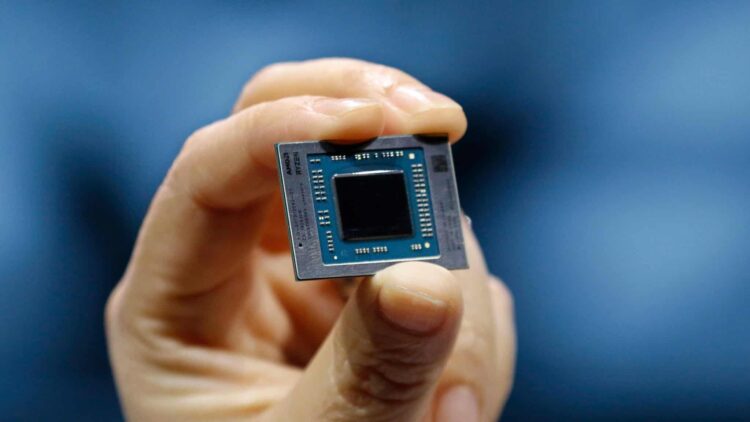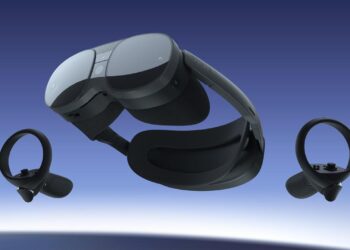The heartbeat of your smartphone isn’t the screen, the camera, or the battery—it’s the mobile system-on-a-chip (SoC), commonly known as the chipset. This tiny slab of silicon is the single most important component, housing the Central Processing Unit (CPU), Graphics Processing Unit (GPU), Neural Processing Unit (NPU), and modem. The continuous, often radical, leaps in SoC performance are what drive every new capability in modern mobile devices, from advanced photography and seamless multitasking to power-efficient 5G connectivity and immersive gaming. Understanding the technological breakthroughs in these new phone chipsets is essential for consumers, developers, and tech enthusiasts who want to know where the next digital frontier of mobile computing is headed. This deep dive explores the core advancements that are fueling these next-generation power boosts.
The Architecture Revolution: Smaller, Faster, Cooler
The fundamental performance gains in new phone chipsets stem from breakthroughs in semiconductor manufacturing process nodes and micro-architecture design.
A. Process Node Shrinkage: The Nanometer Race
The industry is rapidly progressing toward smaller transistor sizes, measured in nanometers (nm). The shift from 5nm to 4nm, 3nm, and now even the emergence of 2nm prototypes is vital.
- Increased Transistor Density: Smaller process nodes allow billions more transistors to be packed into the same silicon area. More transistors mean more processing units (cores) and larger caches, translating directly into higher raw computational power.
- Improved Power Efficiency: The shorter distance electricity needs to travel across smaller transistors dramatically reduces power leakage and the energy required to switch states. This is perhaps the most significant gain, as it means new chips deliver higher performance without drastically increasing battery drain—the holy grail of mobile computing.
- Lower Thermal Output: Since less power is wasted as heat, the chips can run at higher, sustained clock speeds before thermal throttling occurs, leading to superior sustained performance in demanding applications like gaming or video editing.
Major foundry players like TSMC and Samsung Foundry are locked in an intense race to perfect these cutting-edge nodes, which often dictates the peak performance of chipsets from Qualcomm, MediaTek, and Apple.
B. CPU Micro-Architecture Overhaul
The CPU is the general workhorse for operating system tasks, apps, and multitasking. Recent chipset generations have seen crucial architectural changes:
- Heterogeneous Computing (The Big-LITTLE Strategy): Modern CPUs use a mix of different core types, often three clusters:
- Prime/Single-Core (Big) Core: Designed for peak, single-threaded speed (e.g., loading an app, immediate response). These use high-performance architectures (like ARM’s Cortex-X series).
- Performance (Mid) Cores: Designed for sustained, multi-threaded workloads (e.g., intensive multitasking, background processes).
- Efficiency (LITTLE) Cores: Designed for low-power background tasks (e.g., checking email, managing notifications), consuming minimal battery power.
- Dynamic Task Scheduling: Advanced schedulers within the chip and the operating system (OS) work in tandem to dynamically assign tasks to the most appropriate core cluster in real-time, maximizing both performance when needed and efficiency when idle. This sophisticated OS-level optimization is crucial for converting raw chip power into a smooth user experience.
The Gaming and Visual Leap: Next-Gen GPU Power
For gamers and users dealing with high-resolution media, the GPU’s advancements are the most noticeable. The latest mobile GPUs are closing the gap with console and desktop performance at an astonishing rate.
A. Ray Tracing and Global Illumination
Previously a feature exclusive to high-end desktop graphics cards, hardware-accelerated ray tracing is now integrated into premium mobile chipsets (e.g., Snapdragon’s Adreno series or Samsung’s Xclipse based on AMD RDNA technology).
- Realistic Lighting: Ray tracing simulates the physical behavior of light rays, enabling hyper-realistic shadows, reflections, and global illumination effects within games and rendering apps.
- Immersive Gaming: This technology transforms mobile gaming from simple graphics to console-quality visual fidelity, pushing mobile esports and high-fidelity titles to new heights.
B. Variable Rate Shading (VRS)
VRS is an intelligent rendering technique that significantly boosts GPU efficiency.
- Optimization: It allows the GPU to render the parts of the screen the user is focusing on (e.g., the center of the display, character models) at full resolution and detail, while rendering less important or peripheral areas (e.g., the sky, distant walls) at a lower shading rate.
- Performance Gain: This smart optimization reduces the workload on the GPU without a perceptible drop in visual quality for the user, resulting in higher frame rates and better power efficiency during extended gaming sessions.
C. Display and Refresh Rate Support
New chipsets are built to support future display technologies, including native support for:
- Higher Refresh Rates: Pushing beyond 120Hz to 144Hz and even 165Hz on certain gaming phones, ensuring exceptionally smooth motion fluidity.
- Advanced HDR Standards: Enhanced processing for formats like HDR10+ and Dolby Vision, providing wider color gamut and greater contrast for video playback.
- External Display Support: Enabling high-resolution, low-latency output to external monitors for a desktop-like computing experience (a key feature for productivity and convergence platforms).
 The AI Engine: The NPU and Computational Photography
The AI Engine: The NPU and Computational Photography
The dedicated Neural Processing Unit (NPU) is arguably the most rapidly evolving component, driving the intelligence behind every phone function that involves machine learning.
A. Tripling AI Performance
New chipsets often report 2x to 3x increases in AI performance (tera operations per second – TOPS) compared to their predecessors. This power is utilized in several key areas:
- On-Device Machine Learning (ML): Running complex ML models directly on the phone rather than relying on the cloud. This provides instantaneous results, superior privacy, and reduced reliance on network connectivity.
- Adaptive Battery Management: The NPU constantly learns your usage patterns to optimize resource allocation, preemptively shutting down unnecessary background processes and preserving battery life with personalized efficiency.
- Real-Time Language Processing: Enabling features like instant, on-device language translation, enhanced voice assistants, and highly accurate speech-to-text conversion.
B. Computational Photography Dominance
The NPU is the true star behind modern smartphone photography, not just the lens or sensor.
- Semantic Segmentation: The ability of the NPU to instantly recognize and categorize every element in a scene (sky, skin, hair, water, pet, text). This allows the Image Signal Processor (ISP) and NPU to apply highly localized, specific processing to each area, leading to superior final image quality (e.g., brightening the face while enhancing the color of the grass).
- Next-Gen HDR: The NPU intelligently analyzes multiple exposure frames, using ML algorithms to merge them in a way that minimizes ghosting and maximizes dynamic range far beyond traditional software limits.
- Enhanced Video Features: Enabling advanced video capabilities such as real-time cinematic mode (bokeh effect with object tracking), super-resolution upscaling, and advanced noise reduction in low light—all processed instantly as the video is captured.
 Connectivity and I/O: The Unseen Speed Boosts
Connectivity and I/O: The Unseen Speed Boosts
While the CPU and GPU steal the headlines, crucial improvements in connectivity and input/output (I/O) architecture ensure that the internal and external data flow keeps pace.
A. The 5G Modem Evolution
The integrated modem is seeing a massive performance lift:
- mmWave and Sub-6 Integration: Seamless, simultaneous support for both high-speed, short-range mmWave (millimeter wave) and widespread Sub-6 GHz 5G bands, ensuring the best possible connection regardless of location.
- Lower Latency: Continuous optimization for lower latency connections, which is critical for cloud gaming, remote work, and time-sensitive industrial applications.
- Power Savings: Modem architecture is becoming significantly more power-efficient, minimizing the battery penalty that early 5G adoption incurred.
B. Memory and Storage Standards
The internal speed of the phone is dictated by the memory and storage standards the chipset supports. New generations bring support for:
- LPDDR5X/LPDDR6 DRAM: Faster Random Access Memory (RAM) standards allow the CPU and GPU to access data at significantly higher speeds, reducing bottlenecks in multitasking and resource-heavy games.
- UFS 4.0 Storage: The transition to UFS 4.0 storage provides double the read/write speeds of previous generations while improving power efficiency. This translates to instantaneous app loading, faster file transfers, and quicker boot times.
- Advanced Caching: Larger on-chip caches (L1, L2, L3) and system-level caches that hold frequently used data closer to the processing cores, dramatically speeding up repetitive operations.
C. Next-Generation Wi-Fi and Bluetooth
Chipsets are integrating support for the latest wireless standards:
- Wi-Fi 7 (802.11be): Offering significantly higher throughput, lower latency, and improved reliability over crowded networks compared to Wi-Fi 6/6E.
- Bluetooth LE Audio: Enabling higher quality, lower power audio streaming and new features like Auracast for broadcasting audio to multiple devices simultaneously.
The Strategic Industry Context: Competition and Differentiation
The battle between the major chipset designers—Apple, Qualcomm, and MediaTek—is the primary engine driving these innovations. Each player focuses on different strengths to carve out market share.
A. Apple’s Vertical Integration (The A-Series and M-Series Convergence)
Apple controls the entire stack: hardware, software, and silicon design. This allows for unmatched optimization, squeezing maximum performance and efficiency out of their A-series chips. The recent convergence of the mobile A-series architecture with the desktop M-series silicon highlights a long-term strategy towards a unified computing environment where the phone is a true portable desktop-class machine. Their focus is often on peak single-core performance and groundbreaking NPU/ISP integration.
B. Qualcomm’s Android Dominance (The Snapdragon Ecosystem)
Qualcomm dominates the high-end Android space with its Snapdragon series. Their strength lies in their Adreno GPU performance, their market-leading modem integration, and their focus on developer tooling to help game studios utilize the advanced features like ray tracing and VRS. They focus heavily on maintaining a balance between CPU, GPU, and NPU performance to create a powerful, well-rounded system.
C. MediaTek’s Efficiency and Density (The Dimensity Series)
MediaTek has evolved from a budget contender to a formidable high-end competitor. Their strategy often emphasizes process node acquisition (being first to market with the latest node) and power efficiency at a highly competitive cost, making their Dimensity chips popular among manufacturers who prioritize a strong balance of performance and battery life.
The Long-Term Impact: Beyond Faster Apps
The cumulative effect of these performance boosts extends far beyond faster apps or smoother gaming. They fundamentally change the capabilities of the device itself and user expectations.
1. True Desktop-Class Productivity
The processing power now allows the phone to seamlessly transition into a desktop experience when connected to an external monitor. With high-speed memory and advanced GPU/CPU capabilities, users can run full-featured desktop applications (via virtualization or specific mobile versions) and perform heavy multitasking, blurring the line between mobile and personal computing.
2. Advanced and Accessible Extended Reality (XR)
The low latency, high frame rate, and raw visual processing power are prerequisites for viable, comfortable Augmented Reality (AR) and Virtual Reality (VR) experiences. New chipsets are purpose-built to act as the processing engine for lightweight AR glasses and VR headsets, making high-quality extended reality an inevitable mainstream reality.
3. AI as the Primary User Interface
As NPU performance continues its exponential growth, the phone’s interface will move away from static apps to a dynamic, predictive, and context-aware system. Your phone will not just run applications; it will anticipate your needs, automate complex routines, and provide real-time, personalized assistance based on continuous on-device learning.
The new phone chipsets are not just offering incremental improvements; they are delivering architectural breakthroughs that ensure mobile devices remain at the forefront of the technological revolution for years to come.







